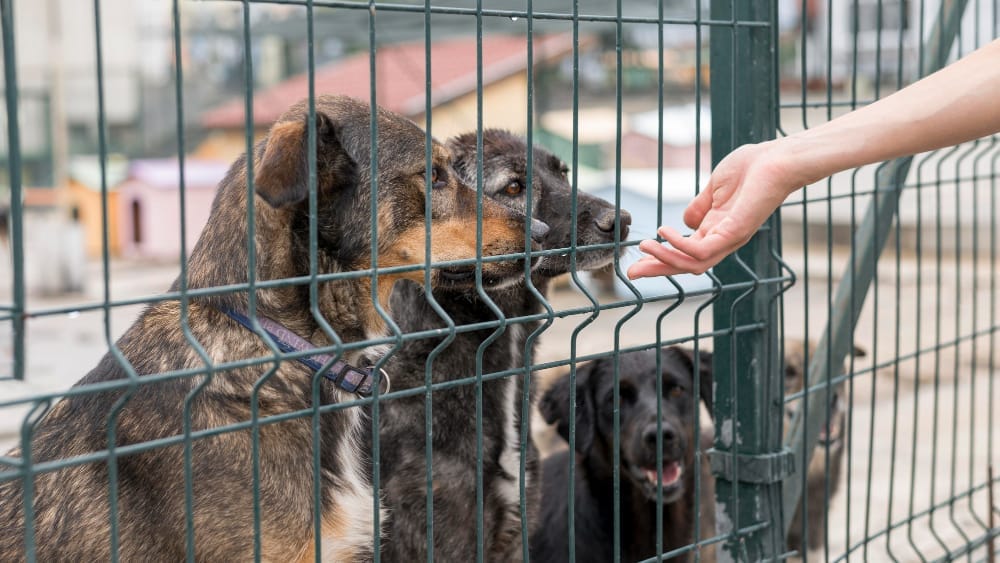
If you’re an organization or individual looking to tackle this problem, read on to discover the most effective strategies for addressing animal hoarding.
Disclaimer: It's important to note that each animal hoarding scenario is unique and may require a different approach. When animals and individuals are in danger, it is essential to contact professional organizations for help. These include local animal welfare organizations, authorities who can intervene in cases of neglect or abuse, and a biohazard cleanup company to safely deal with the aftermath.
Understanding Animal Hoarding
Animal hoarding is more than just a messy home with pets; it derives from a mental health disorder where individuals amass a large number of animals, often beyond their means to care for them properly. These animals are kept in overcrowded and unsanitary conditions without adequate food, water, veterinary care, or socialization.
The hoarding behavior often stems from a deep emotional attachment to the animals and can be influenced by various factors, such as trauma, depression, or feelings of loneliness.
Unfortunately, the hoarder's well-intentioned but misguided care can lead to neglect and suffering for the animals. Common signs of animal hoarding include overwhelming numbers of animals, unsanitary living conditions, refusal to acknowledge the severity of the situation, and frequent acquisition of more animals despite neglecting the ones already in their care.

Ways to Effectively Help
1. Education and Awareness
Raising awareness about animal hoarding is the first step in addressing the issue. It is vital to educate the public, and professionals in healthcare, social services, and animal welfare, about the signs of hoarding and the best practices for intervention.
2. Collaboration with Animal Welfare Organizations
Collaborating with local animal welfare organizations can provide a solid foundation for addressing cases of animal hoarding. These organizations often handle the complexities of removing animals from hoarding situations safely and humanely.
3. Intervention and Support for Hoarders
Interventions should be designed to address the hoarder's mental health needs while ensuring the welfare of the animals. Mental health professionals can work with hoarders to provide therapy and support, addressing the root causes of their hoarding behavior and helping them develop healthier relationships with animals.

Support groups for hoarders, similar to those for addiction recovery, can also be beneficial. These groups offer a sense of community and understanding, which can be essential for individuals working to overcome their hoarding tendencies. It's important to approach hoarders with empathy and non-judgment. Shaming or blaming hoarders can be counterproductive and may lead to further isolation and resistance to intervention.
4. Legal and Ethical Considerations
Animal welfare laws vary by state and local jurisdiction, so it's critical to work within the legal framework to protect the animals and assist the individual.
In some cases, seeking a court order to remove animals from the hoarder's care may be necessary. Legal intervention should be used as a last resort, with every effort made to support the hoarder and encourage voluntary compliance with animal welfare standards.
5. Long-term Recovery and Follow-up
Long-term recovery and follow-up are crucial to prevent recidivism and ensure the health and safety of both hoarders and animals. Develop a plan with clear, manageable steps for the hoarder to follow, with regular check-ins and support to help them maintain a healthy environment.

Follow-up care should be provided for the animals as well. Animal welfare organizations and volunteers can play a significant role in providing ongoing support for the animals by fostering, socializing, and eventually rehoming them in environments where they can thrive.
How Bio-One of Poway Can Help
It's a challenging and sensitive issue, but with the right strategies and collective effort, we can offer hope, support, and a path to recovery for those struggling with animal hoarding. Remember, it takes a village to tackle hoarding, and every individual or organization has a role to play in helping those in need.
If your community is dealing with an animal hoarding situation, remember that you're not alone. Local support networks and professional services. Our ultimate goal is to create a landscape of care where both animals and people can prosper. Contact our team for a free consultation in the San Diego County area.


